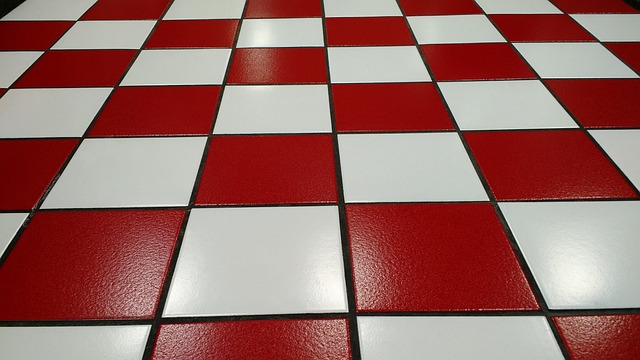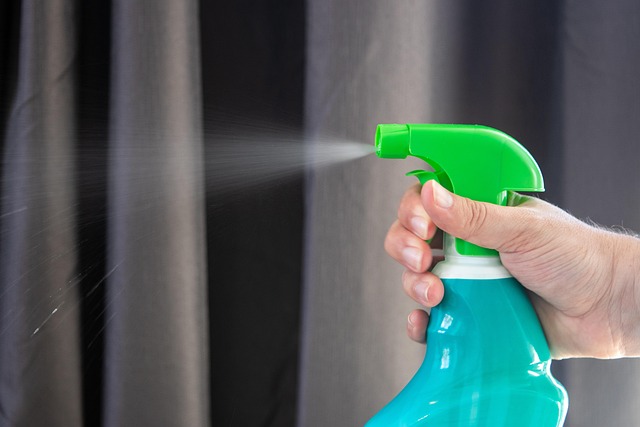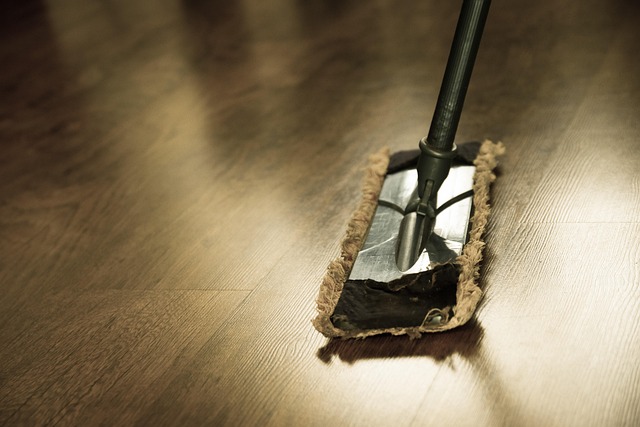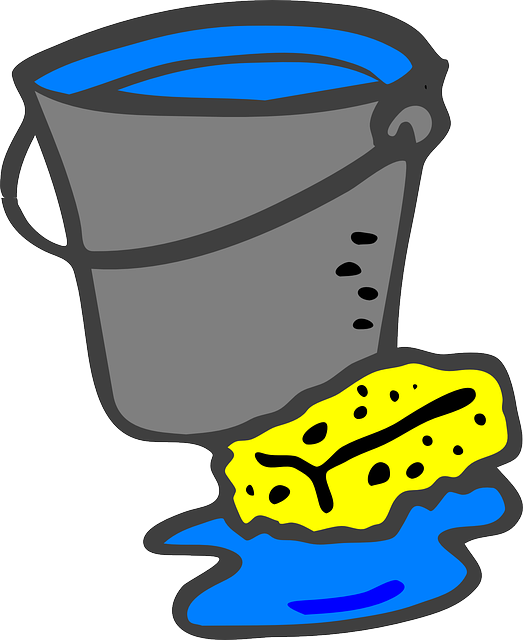Steam cleaning for tile and grout floors is a comprehensive, eco-friendly solution for maintaining aesthetics and functionality. It effectively removes dirt, stains, mold, and bacteria without damaging tiles or grout structures. Preparation, including clearing debris and protecting adjacent surfaces, is crucial. Using the right equipment and adjusting settings ensures optimal results. Regular maintenance and sealing protect against future damage. Case studies demonstrate its versatility and success in both commercial and residential settings.
Steam cleaning has emerged as a powerful, yet often overlooked, method for restoring tile and grout floors to their former glory. This natural, non-toxic approach effectively addresses the common decline of these surfaces due to dirt, stains, and mold. By understanding the unique challenges faced by tile and grout, this article explores the benefits of steam cleaning, provides a comprehensive guide to the process, and offers expert insights on equipment selection, maintenance, and real-world success stories.
Understanding Tile and Grout Decline

Tile and grout floors, despite their durability, are susceptible to decline over time due to various factors. Regular wear and tear from foot traffic, especially in high-traffic areas like kitchens and bathrooms, can lead to surface damage and staining. Additionally, improper cleaning methods or lack thereof can contribute to the buildup of dirt, grease, and bacteria, making grout lines appear discolored and uninviting. As time goes on, these issues can result in a significant loss of aesthetics and functionality, affecting the overall value of your property.
Steam cleaning for tile and grout floors offers a comprehensive solution to address these problems. Unlike traditional cleaning methods that may leave residues or fail to penetrate deep into pores, steam cleaning utilizes high-pressure hot water vapor to effectively remove dirt, stains, and even mold spores from both tiles and grout. This non-invasive approach ensures minimal disruption while delivering exceptional cleaning results, restoring your floors to their former glory.
The Power of Steam Cleaning

Steam cleaning has emerged as a powerful tool in the realm of tile and grout restoration, offering an effective and eco-friendly solution for deep cleaning. This method utilizes high-pressure steam to penetrate deeply into the pores of ceramic, porcelain, and natural stone tiles, as well as the intricate crevices of grout. By applying heat and moisture, steam cleaning effectively breaks down and removes stubborn dirt, grime, and even mold and mildew, leaving surfaces sparkling clean.
Unlike traditional cleaning methods that may rely on harsh chemicals, steam cleaning provides a gentle yet powerful approach. The hot steam softens and loosens debris without damaging delicate tile or grout structures. This non-invasive technique is particularly beneficial for older or heritage tiles, ensuring their longevity while restoring their original beauty. Steam cleaning also reduces the need for extensive scrubbing, making it a more efficient and user-friendly option for both homeowners and professionals in the field of steam cleaning for tile and grout floors.
Preparation for the Process

Before beginning the steam cleaning process for your tile and grout floors, thorough preparation is key to achieving optimal results. Start by clearing the floor area of any loose debris, furniture, or objects that might obstruct the cleaning equipment. Remove all rugs or mats as well, as they can trap dirt and moisture, hindering the cleaning effectiveness.
In terms of protective gear, ensure you have appropriate clothing, including gloves and eye protection, to safeguard against any splashes or vapours emitted during the steam cleaning process. Covering adjacent surfaces with drop cloths or plastic sheeting is also recommended to prevent water damage and make cleanup easier afterward.
Step-by-Step Steam Cleaning Procedure

Steam cleaning is an effective, eco-friendly method for tile and grout restoration. Here’s a step-by-step guide to help you achieve optimal results:
1. Preparation: Begin by clearing the floor of any furniture or debris. Protect adjacent surfaces with drop cloths. Ensure proper ventilation in the room to prevent excess moisture buildup.
2. Choose the Right Steam Cleaner: Select a steam cleaner designed specifically for tile and grout floors. These machines deliver high-pressure, heated steam to effectively loosen and remove dirt, stains, and grime. Look for models with adjustable settings to control temperature and water flow based on your flooring type.
3. Apply Steam: Fill your steam cleaner with water and attach the appropriate cleaning attachment. Start at one corner of the floor and move in straight lines, overlapping each pass slightly. Allow the steam to penetrate the grout lines and tile surfaces for several minutes. This will help break down and dissolve stubborn stains.
4. Scrub Gently: Using a soft-bristled brush or sponge, gently scrub the tiles and grout with mild detergent or a specialized stone cleaner. Be careful not to apply too much pressure to avoid damaging the tiles. Focus on areas with heavy soiling.
5. Rinse Thoroughly: After scrubbing, rinse the floor thoroughly with clean water. Make sure all soap residue is removed. Use a wet-dry vacuum or mop to ensure no standing water remains.
6. Dry and Inspect: Allow the floor to air dry completely before walking on it. Once dry, inspect the tiles and grout for any remaining stains or issues. If necessary, repeat the process until desired results are achieved.
Benefits of This Restoration Method

Steam cleaning for tile and grout floors offers numerous benefits that make it a preferred restoration method. Firstly, it effectively removes deep-seated dirt, grime, and debris embedded in the pores of tiles and grouts. Unlike traditional cleaning methods that merely mask stains, steam cleaning penetrates and loosens toughened-in grime, ensuring a thorough clean. This process is particularly advantageous for heavily trafficked areas where regular mopping might not be as effective.
Moreover, steam cleaning is eco-friendly and safe for various types of tile and grout materials. It utilizes hot water and pressure to create powerful steaming that eliminates bacteria, viruses, and other microorganisms without the need for harsh chemicals. This makes it a healthy choice, especially in residential settings or commercial spaces with high foot traffic. Additionally, steam cleaning leaves no residue or chemical fumes, ensuring a fresh and clean environment post-restoration.
Addressing Common Concerns

Many homeowners worry about the safety and effectiveness of steam cleaning for tile and grout floors. They question whether it’s gentle enough to avoid damaging delicate surfaces or if it will leave behind moisture that could cause further problems. Rest assured, modern steam cleaning techniques are highly advanced and tailored for these specific challenges. The low-pressure steam technology used today is designed to penetrate grout lines effectively while minimizing water intrusion into tile crevices. This ensures a thorough clean without causing any structural damage or unwanted moisture buildup.
Another common concern revolves around the time it takes to dry after a steam cleaning session. While it’s true that tiles and grout do need time to dry, advanced equipment now speeds up this process significantly. Modern steam cleaners incorporate efficient drying mechanisms, ensuring your floors are ready for use in no time, leaving behind only clean and revitalized tile and grout surfaces.
Choosing the Right Equipment

When considering steam cleaning for tile and grout floors, selecting the appropriate equipment is paramount. The right tools can make all the difference in terms of efficiency and effectiveness during the restoration process. For instance, a commercial-grade steam cleaner with adjustable pressure settings offers versatility, allowing you to cater to various floor types and levels of soiling.
Look for machines with built-in vacuum systems that efficiently remove dirt and moisture simultaneously. This not only streamlines the cleaning process but also reduces drying time, minimizing potential damage or stains caused by prolonged moisture exposure. Additionally, investing in attachments like brush heads or scrubbers can help dislodge stubborn grime, ensuring a thorough clean that restores the tile and grout to their original condition.
Maintenance and Future Care

Proper maintenance and future care are essential for keeping your steam-cleaned tile and grout floors looking their best. Regular cleaning and sealing will protect against dirt, stains, and moisture penetration that can cause damage over time. After a professional steam cleaning service, be sure to vacuum or sweep frequently to remove any loose debris, and use non-abrasive cleaners when needed.
Consider a preventive measure by sealing your grout lines every 12-18 months to maintain the protection against stains and moisture. This simple step can extend the life of your tile and grout restoration, ensuring you enjoy a beautiful, like-new floor for years to come. Remember, regular upkeep is key when it comes to steam cleaning for tile and grout floors.
Case Studies: Successful Steam Cleaning Projects

Steam cleaning has emerged as a powerful tool in the tile and grout restoration industry, delivering exceptional results across various case studies. One successful project involved a commercial kitchen floor that had suffered from years of grease buildup and heavy foot traffic. The steam cleaning process effectively removed deep-seated grime, revitalizing the tiles and grout lines to their original condition. This method’s non-invasive approach ensures minimal disruption during the restoration process, making it ideal for busy spaces.
Another notable case study focused on a residential bathroom where mold and mildew had taken hold due to poor ventilation and water damage. Steam cleaning not only eliminated these unsightly marks but also killed any remaining mold spores, preventing future growth. The technique’s ability to deeply penetrate and sanitize makes it an excellent solution for challenging restoration projects, particularly in humid environments. These real-world applications highlight the versatility and effectiveness of steam cleaning for tile and grout floors, offering a durable and aesthetic restore without the need for harsh chemicals.
